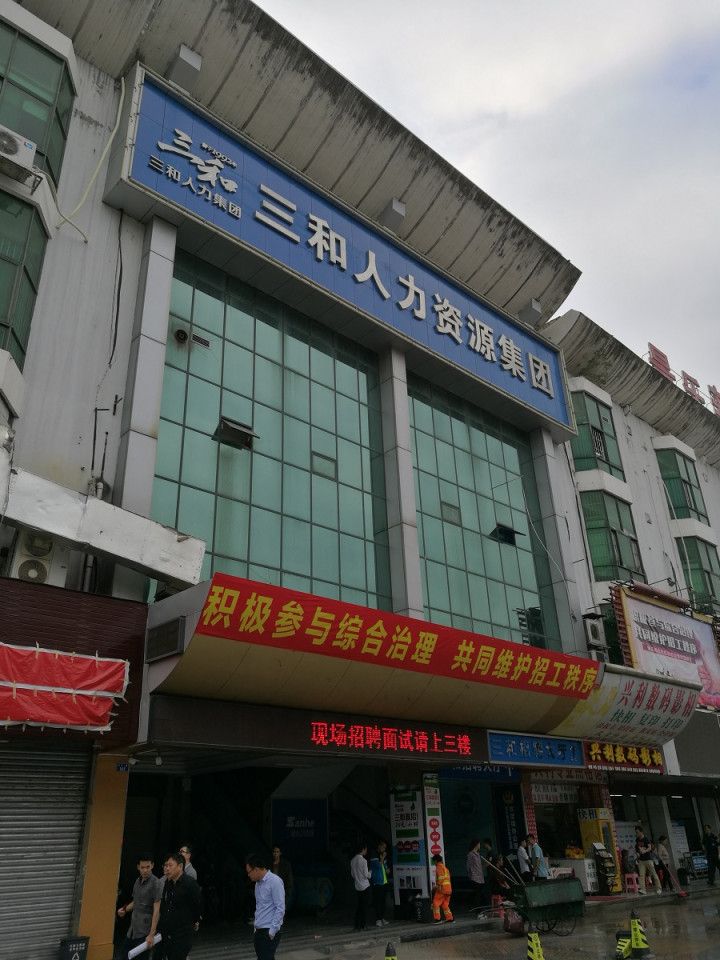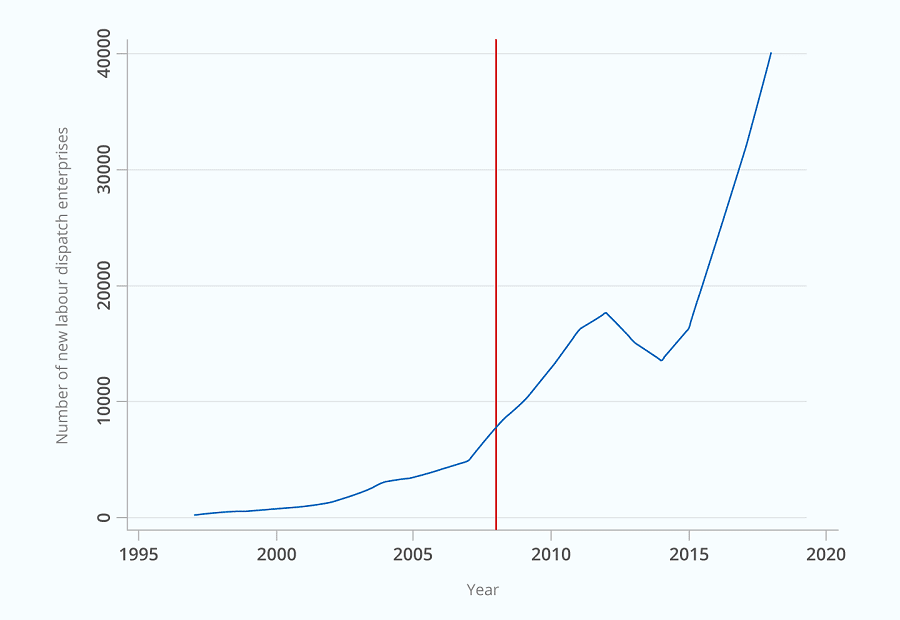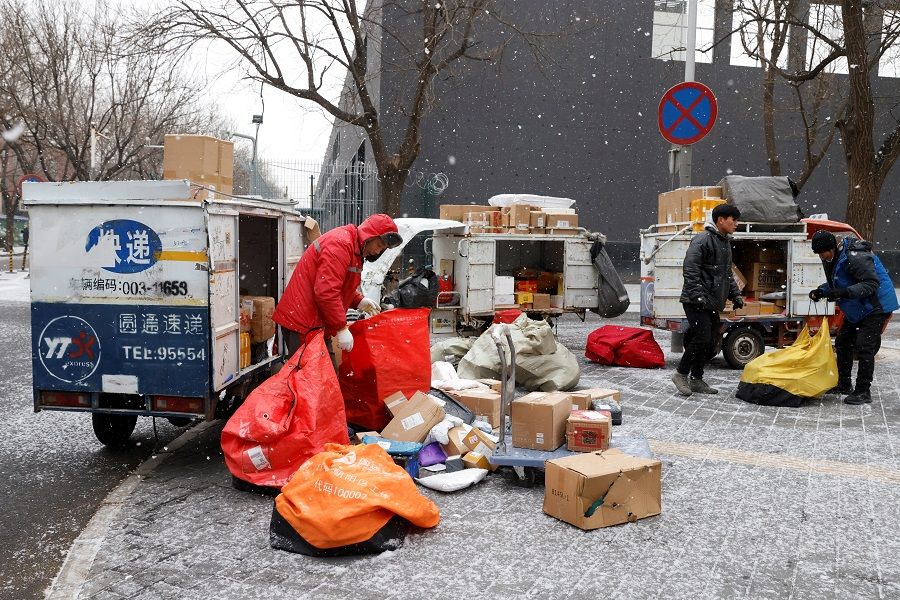Plight of China's new generation of young migrant workers highlights pitfalls of labour reforms

As the world ushered in the year of the Tiger, snow fell in China.
Amid the snow flurries, I thought of the "Sanhe legends" (三和大神) who used to huddle outside the various labour recruitment agencies in Shenzhen's Sanhe marketplace. Where are they now? How's life treating them?
Sanhe youths: unskilled and marginalised
"Sanhe" is the name of the largest human resources company in Shenzhen's Longhua district, and "Sanhe legends" refers to a new generation of young migrant workers who stay near the Haixinxin Talent Markets located in the district. With no permanent residence, these temporary labourers are paid by the day and mostly work as couriers, security guards and construction workers, living by the simple mantra of "work for a day, party for three".
While these migrant workers have their own reasons for becoming Sanhe legends, they share some common traits. Firstly, they have low academic qualifications. Most of them did not go to university, while some did not even attend high school. Even among those who graduated from university, because their specialisation is so niche, they are unable to find their desired jobs.
They are a marginalised group in society. Some have even long sold their identity cards, are saddled with debt and seldom keep in touch with their families.
Secondly, they are unskilled and have no plans to upgrade themselves. Most importantly, they are unable to bear tough working conditions, which is a key difference between them and their parents' generation. Thus, they choose to be paid by the day, and live from day to day in the small community of the Sanhe marketplace.

They are a marginalised group in society. Some have even long sold their identity cards, are saddled with debt and seldom keep in touch with their families. It is difficult for these Sanhe legends to reintegrate back into mainstream society after living a hard and lackadaisical lifestyle for an extended period of time. In 2020, Professor Tian Feng from the Chinese Society of Social Sciences and his student Lin Kaixuan published a book (《岂不怀归��:三和青年调查》lit. Don't They Want to Go Home: A Survey of Sanhe Youths) detailing the life of Sanhe youths based on first-hand data.
Reforms to labour law
In reality, the Sanhe legends' survival in today's era is closely related to a multi-tiered labour demand that has developed in the process of urbanisation.
In neoclassical economics, the labour market is thought to be uniform and competitive. But in fact, such theoretical assumptions prevent us from doing deeper analysis of the labour market.
Upon closer assessment, China's labour market is actually multi-tiered. Based on the type of employment, workers can be divided into three categories:
1) A formal employment contract is signed between the employer and the employee, and both parties are protected by law;
2) Employees are hired on a "dispatched" or an "outsourced" basis, and do not have a formal labour relationship with the employer;
3) Workers such as the Sanhe youths who choose to be paid by the day and do not have a so-called labour relationship with their hirers.
These three types of workers seem to represent three different social classes. The extent to which they are protected by labour laws not only determines their identity but also their social status. Belonging to the third category of workers, Sanhe youths live in even harsher environments and receive the least legal protection.
The legal framework of China's labour law was reformed in response to a series of social and economic problems that emerged as the country progressed towards a market economy.

As a commodity, labour itself is subordinate to the state's history and regimes. At the same time, it is also inseparable from the law. The evolution of China's labour laws not only reflects the changes in labour relationships over time, but also promotes the evolution of employment relations.
The legal framework of China's labour law was reformed in response to a series of social and economic problems that emerged as the country progressed towards a market economy. In 1986, state-owned enterprises implemented the labour contract system (in accordance with the Provisional Regulations on Institution Of Labour Contract System In State-Owned Enterprises) across the board in an attempt to eliminate the ills of lifetime employment and guaranteed job security.
In 1995, China enacted the Labour Law (《劳动法》), laying down the principles of labour contracts and comprehensively implementing the labour contract system. Over 20 provinces, autonomous regions and municipalities also came up with their own set of local rules and regulations governing labour contracts, forming a preliminary system of policies and regulations related to the labour contract system.
While the Labour Law and its supporting regulations played an active role in regulating and coordinating labour relations, they were also overly rigid and abstract in practice, and could be haphazardly implemented and ineffective at the local and departmental levels. Gradually, they failed to meet the developmental needs of the market economy.

Following a complex legislative process, the Labour Contract Law (《劳动合同法�》) was enacted by the Standing Committee of the National People's Congress on 29 June 2007 and took effect on 1 January 2008.
The purpose of the Labour Contract Law is crystal clear: "This Law is enacted in order to improve the labour contract system, define the rights and obligations of both parties to a labour contract, protect the legitimate rights and interests of workers, and establish and develop a harmonious and stable labour relationship." Therefore, the focus of the policy is to strengthen the protection of the legitimate rights and interests of workers.
The Labour Contract Law appears to have achieved the desired effect in the short term following its implementation. But at the same time, it also resulted in an unexpected phenomenon - a surge in dispatched and outsourced employees.
Unexpected proliferation of labour dispatch and outsourcing
Clearly, the Labour Contract Law supports labour protection, which will impact enterprises' employment costs. Employers will try to avoid the high costs of this law as much as possible while still abiding by the law.
The Labour Contract Law appears to have achieved the desired effect in the short term following its implementation. But at the same time, it also resulted in an unexpected phenomenon - a surge in dispatched and outsourced employees.
To rectify employment irregularities and illegal labour dispatches, changes were made to the provisions of labour contracts and labour dispatching agreements, and the revised law became effective on 1 July 2013.
To further enforce the Labour Contract Law, the Ministry of Human Resources and Social Security drafted the "Interim Provisions on Labour Dispatch" (《劳务派遣暂行规定》), which took effect on 1 March 2014, enacting strict restrictions on the proportion of dispatched workers in a company's workforce. However, due to a variety of reasons, the original intentions of this interim provision were unfulfilled.
Figures 1a and 1b below indicate the trend in the number of registered labour dispatch companies and labour outsourcing companies respectively over the years. Figure 1a shows that while there has been an annual increase in the number of registered labour dispatch companies before 2008, this increase was a gradual one compared with the sharp rise reported after 2007/2008.

The effects of the "Interim Provisions on Labour Dispatch" are also reflected in the graph. In 2013 and 2014, the number of registered labour dispatch companies unexpectedly decreased, coinciding with the time when discussions for the interim provisions were underway. After 2015, the number of such companies increased again, and skyrocketed at that.
But after 2013, the number of registered labour outsourcing companies soared, which may be due to employers wanting to avoid regulations related to labour dispatch companies as a result of the interim provisions.

Figure 1b, however, shows that the number of registered labour outsourcing companies only reported a steady increase between 2008 and 2013, in contrast with the uptick in the growth of labour dispatch companies. This is probably because the government had yet to clearly define dispatched labour at that time, and employers had little demand for labour outsourcing companies. But after 2013, the number of registered labour outsourcing companies soared, which may be due to employers wanting to avoid regulations related to labour dispatch companies as a result of the interim provisions.
The Labour Contract Law, which was implemented in 2008, aimed to protect the rights and interests of workers and regulate the signing of labour contracts. However, as the above-mentioned data infers, the implementation of the law concurrently set off the proliferation of labour dispatch and labour outsourcing, forming a new dual-structured labour market characterised by different contract structures.
Low wage, instability and poor conditions
In the 1960s and 1970s, American economist and sociologist of the neostructuralist school Michael Piore proposed the dual labour market theory that divides the labour market into primary and secondary sectors. The primary sector is characterised by high wages, good working conditions, stability, a safe working environment, standardised management processes and ample room for promotion. On the other hand, the secondary sector is the complete opposite.
Employers in the primary sector are generally larger companies producing capital-intensive goods, which makes it easier for them to form an internal labour market, where workers are hired into entry level jobs and higher levels are filled from within. Workers' wages are also not determined by marginal productivity but instead by which rung of the corporate ladder they are at. This implies that employees can be paid higher than the external market rate.
Employers in the secondary sector consist of numerous small- and medium-sized enterprises. As product demand in this sector changes frequently, these enterprises are not interested in developing an internal labour market, and wages are determined by supply and demand. Among them, workers that are paid by the day best reflect the short-term supply and demand of labour markets.

Sanhe youths are basically workers in Piore's so-called secondary sector. They are not interested in upgrading themselves to increase their marginal productivity. At the same time, Piore also discovered that workers in the secondary sector are mostly lazy, lack a concept of time, and are difficult to work with - behaviours that are completely incompatible with the requirements of the primary sector. Professor Tian Feng's description of Sanhe youths in his book is similar to Piore's description of workers in the secondary sector as well.
Workers whose value is relatively easier to be replaced by the market will choose to enter the labour dispatch or outsourcing market and wait for a job offer.
The new dual-structured labour market created by the Labour Contract Law has made the division of workers more obvious in terms of contract structures. Workers who are most valuable to the enterprises will enter its internal labour market, sign a labour contract, establish a labour relationship with the employer and climb the corporate ladder.
Workers whose value is relatively easier to be replaced by the market will choose to enter the labour dispatch or outsourcing market and wait for a job offer. As for the enterprises, jobs that can be easily replaced by the market, and that face great flexibility and uncertainty will appear on Shenzhen's Sanhe marketplace and Beijing's Majuqiao temporary job market.
Sanhe youths belong to a new generation of migrant workers who are starkly different from their parent's generation. They no longer hold fast to their roots in the villages but are rather "half-city dwellers". But at the same time, the city is unable to accept them in the way that they hope to be accepted. To the city, the villages are still where they belong. While Sanhe youths each have their own reasons for choosing this way of life, behind their seemingly carefree attitude is the imprint of a society in transition and the institutional context amid the complex ecology of China's labour market.
This article was first published in Chinese by Caixin Global as "薪资日结的三和青年,转型社会的复杂背影". Caixin Global is one of the most respected sources for macroeconomic, financial and business news and information about China.
Related: 72-hour workweek in China's tech companies: Driving innovation or destroying workers? | A burning issue among Chinese youths: How to escape the rat race? | Chinese economics professor: If you like salty and spicy food, your ancestors might have been poorer folk | Can the domestic market save jobs, livelihoods and companies in China? | 200 million Chinese are in flexible employment. Is this their choice?

